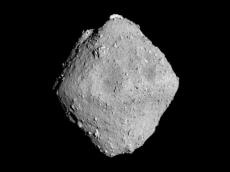Today.Az » World news » Scientists find water in outer Solar System
18 February 2025 [08:00] - Today.Az

By Alimat Aliyeva Japanese scientists from Kyoto University have discovered evidence of salt minerals on the asteroid Ryugu. The results suggest that liquid saltwater may have once existed on Ryugu's parent body in the past. The team examined samples collected by the Hayabusa2 probe in 2020. These samples contained sodium carbonate, halite, and sodium sulfates—all of which form in the presence of water. Researchers propose that Ryugu was once part of a larger celestial body that existed around 4.5 billion years ago. "These salt crystals tell us how liquid water disappeared from Ryugu's parent body," explained co-author Toru Matsumoto. According to Matsumoto, salt minerals could have formed in environments with limited amounts of liquid, which then evaporated or froze over time. This discovery is significant for understanding the role of water in the formation of planets and their moons. Scientists believe that similar salt deposits could be found on the dwarf planet Ceres, as well as on the moons of Jupiter and Saturn, such as Europa, Ganymede, and Enceladus, which are thought to harbor underground oceans. The Hayabusa2 mission returned more than five grams of material from the asteroid to Earth. These samples continue to unveil new insights into the early stages of the Solar System's formation and the potential precursors to life. The discovery of salt minerals on Ryugu could also provide important clues about the chemical processes that may have occurred on Earth’s early oceans, potentially shaping the conditions necessary for life to emerge. Additionally, as missions like Hayabusa2 continue to study asteroids, they could offer more direct evidence about the links between asteroids, comets, and the formation of the planets, shedding light on the fundamental ingredients that make up our Solar System.
|